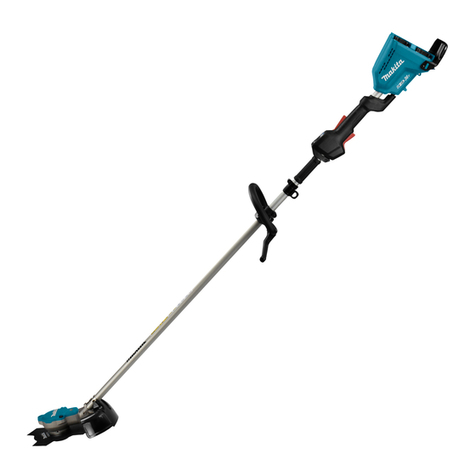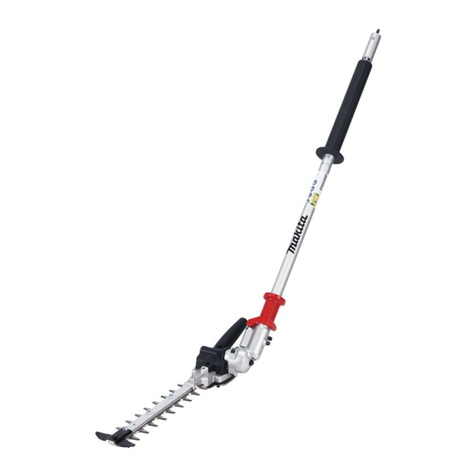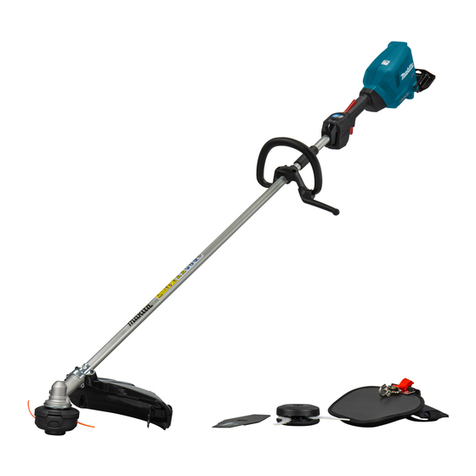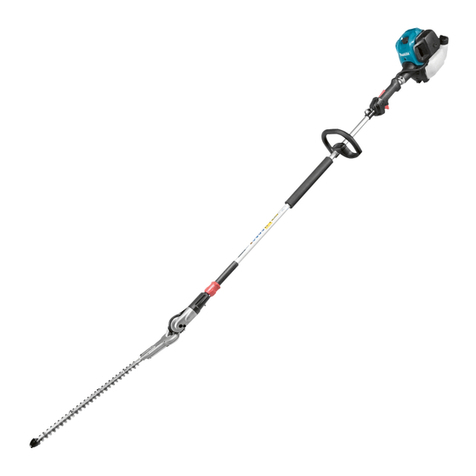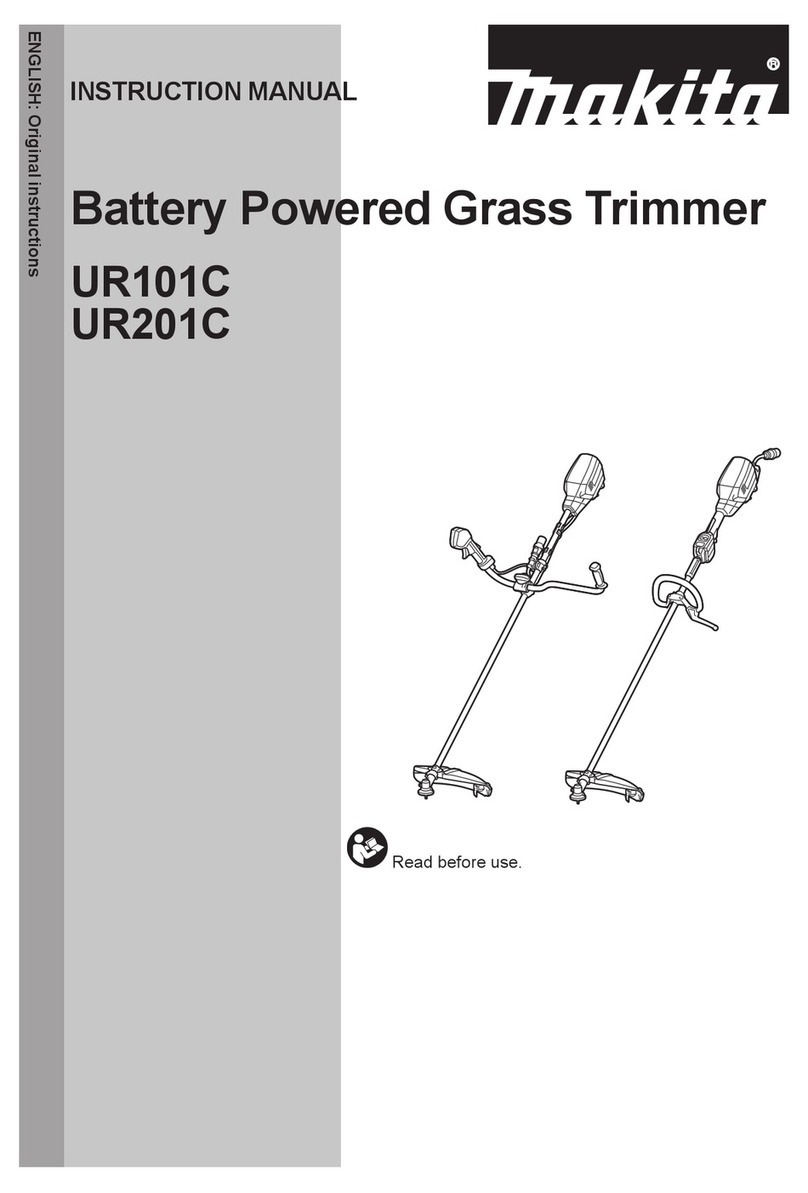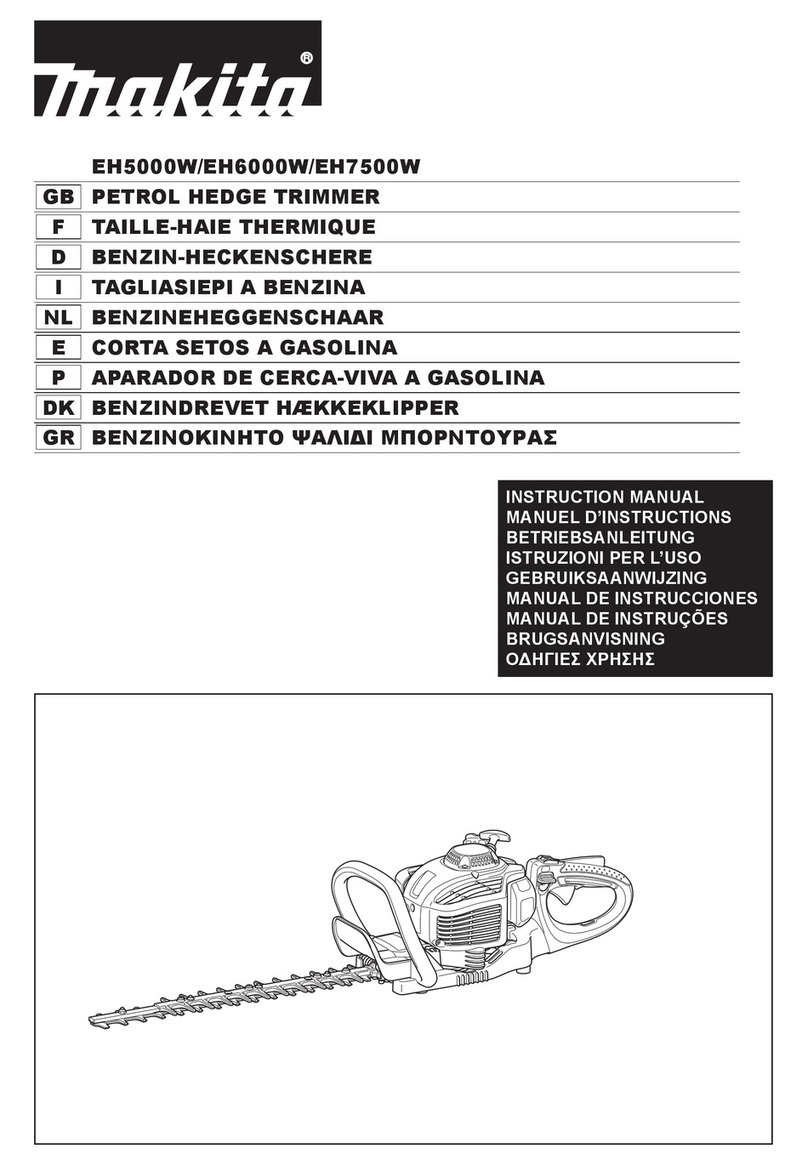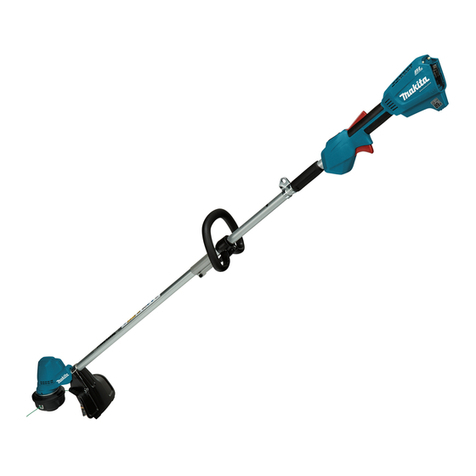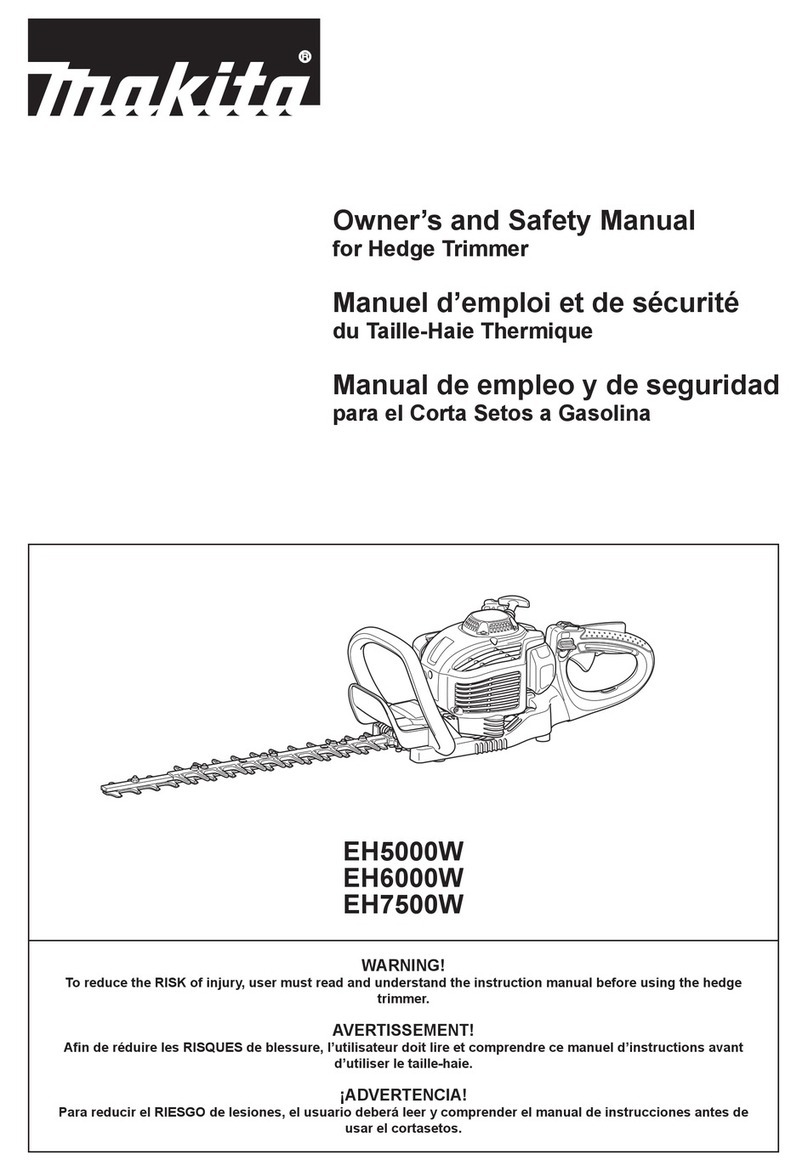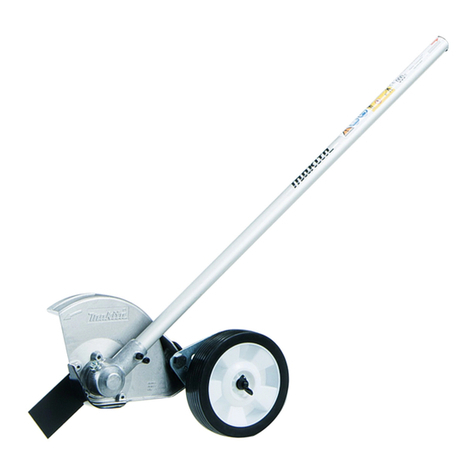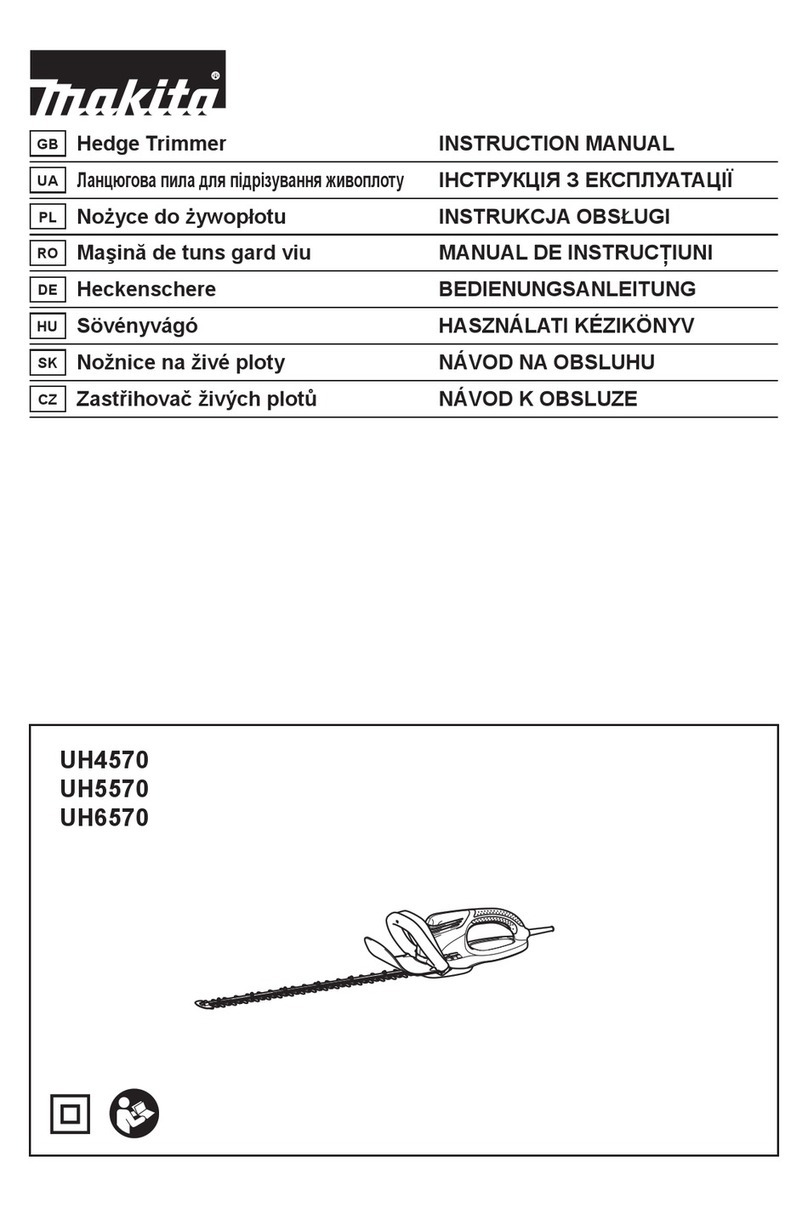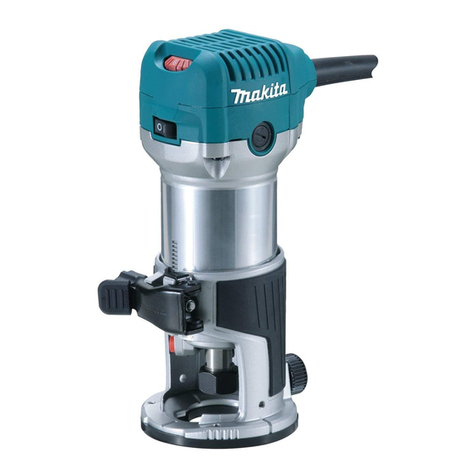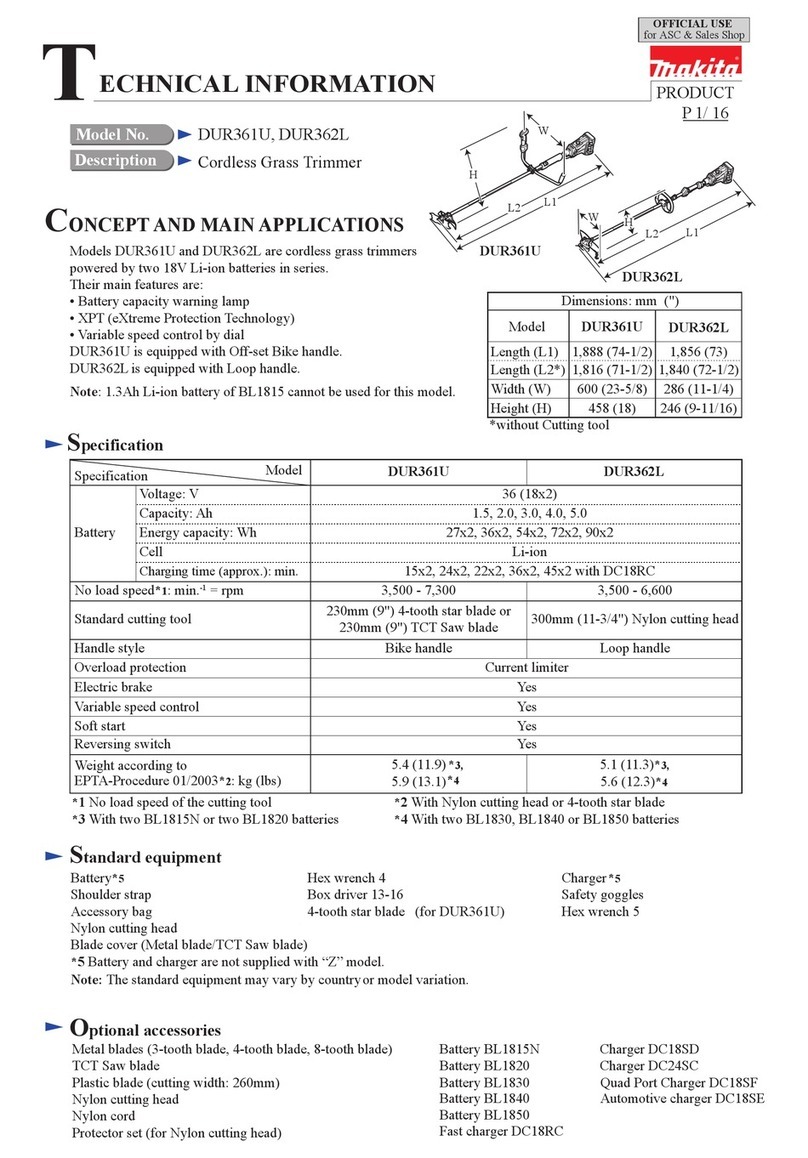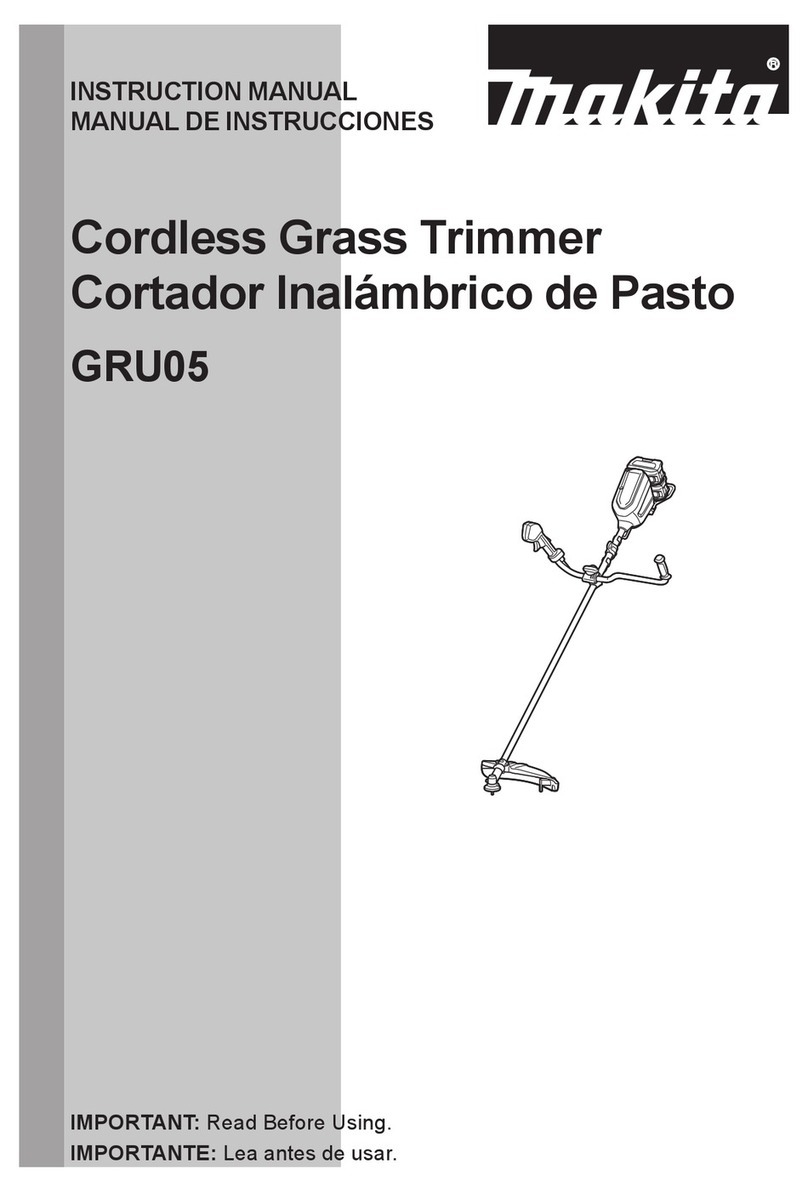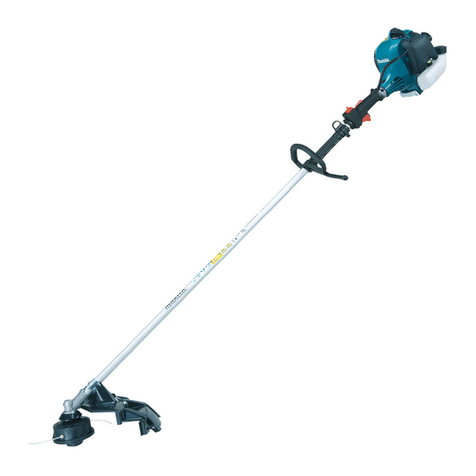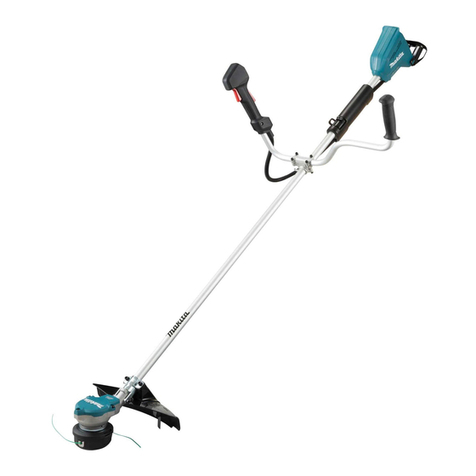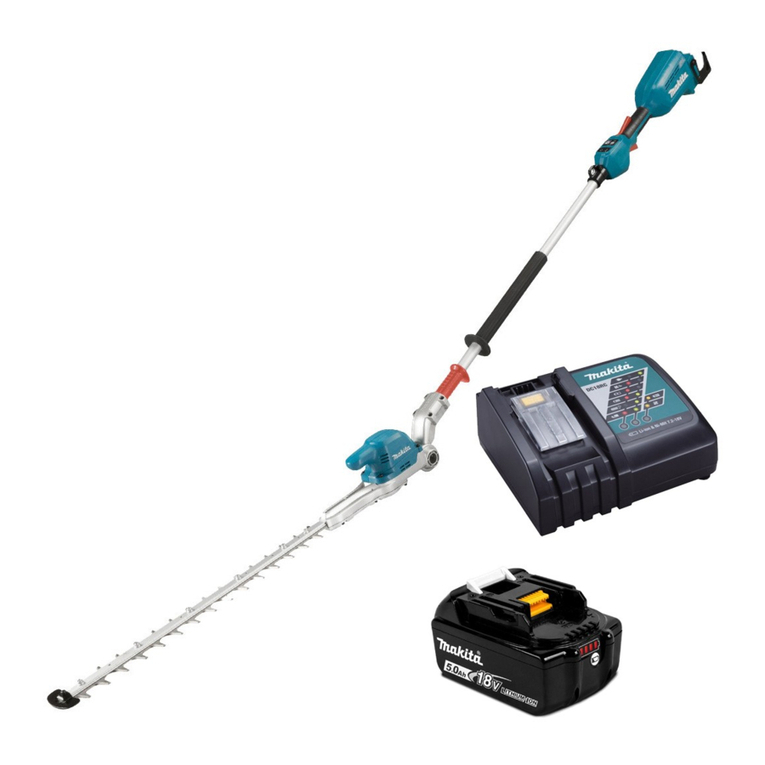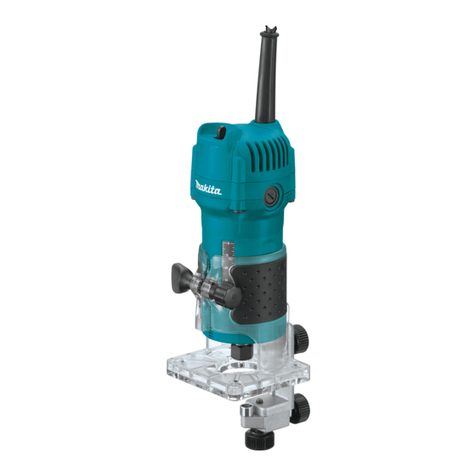1. Dress Properly. The clothing worn should be
functional and appropriate, i.e. it should be
wear either jewelry or clothing which could
become entangled with high grass. Wear pro-
tective hair covering to contain long hair.
2. When using the tool, always wear sturdy shoes
with a non-slip sole. This protects against
injuries and ensures a good footing.
3.
Always wear protective goggles to protect your eyes
from injury when using power tools.The goggles
must comply with ANSI Z87.1 in the USA, EN 166 in
Europe, or AS/NZS 1336 in Australia/New Zealand. In
Australia/New Zealand, it is legally required to wear
a face shield to protect your face, too.
It is an employer's responsibility to enforce
the use of appropriate safety protective equip-
ments by the tool operators and by other per-
sons in the immediate working area.
Electrical and battery safety
1.
Avoid dangerous environment. Don't use the tool in
-
ing the tool will increase the risk of electric shock.
2.
the manufacturer. A charger that is suitable for
one type of battery pack may create a risk of
3. -
nated battery packs. Use of any other battery
4. When battery pack is not in use, keep it away
from other metal objects, like paper clips,
coins, keys, nails, screws or other small metal
objects, that can make a connection from one
terminal to another. Shorting the battery termi-
5.
Under abusive conditions, liquid may be ejected
from the battery; avoid contact. If contact
contacts eyes, seek medical help. Liquid ejected
from the battery may cause irritation or burns.
6.
possible special disposal instructions.
7.
Do not open or mutilate the battery(ies). Released
electrolyte is corrosive and may cause damage to
8.
Do not charge battery in rain, or in wet locations.
Starting up the tool
1. Make sure that there are no children or other
people within a working range of 15 meters
(50 ft), also pay attention to any animals in the
working vicinity. Otherwise stop using the tool.
2.
Before use always check that the tool is safe for
operation. Check the security of the cutting tool
and the guard and the switch trigger/lever for
easy and proper action. Check for clean and dry
handles and test the on/off function of the switch.
3.
Check damaged parts before further use of
the tool. A guard or other part that is damaged
should be carefully checked to determine that it
will operate properly and perform its intended
function. Check for alignment of moving parts,
binding of moving parts, breakage of parts,
mounting, and any other condition that may
affect its operation. A guard or other part that
is damaged should be properly repaired or
replaced by our authorized service center
unless indicated elsewhere in this manual.
4. Switch on the motor only when hands and feet
are away from the cutting tool.
5.
Before starting make sure that the cutting tool has no
contact with hard objects such as branches, stones
etc. as the cutting tool will revolve when starting.
6. Make sure there are no electrical cables, water
pipes, gas pipes etc. that could cause a hazard
if damaged by use of the tool.
Method of operation
1. Never operate the machine with damaged
guards or without the guards in place.
2. Only use the tool in good light and visibility.
During the winter season beware of slippery
or wet areas, ice and snow (risk of slipping).
Always ensure a safe footing.
3. Take care against injury to feet and hands from
the cutting tool.
